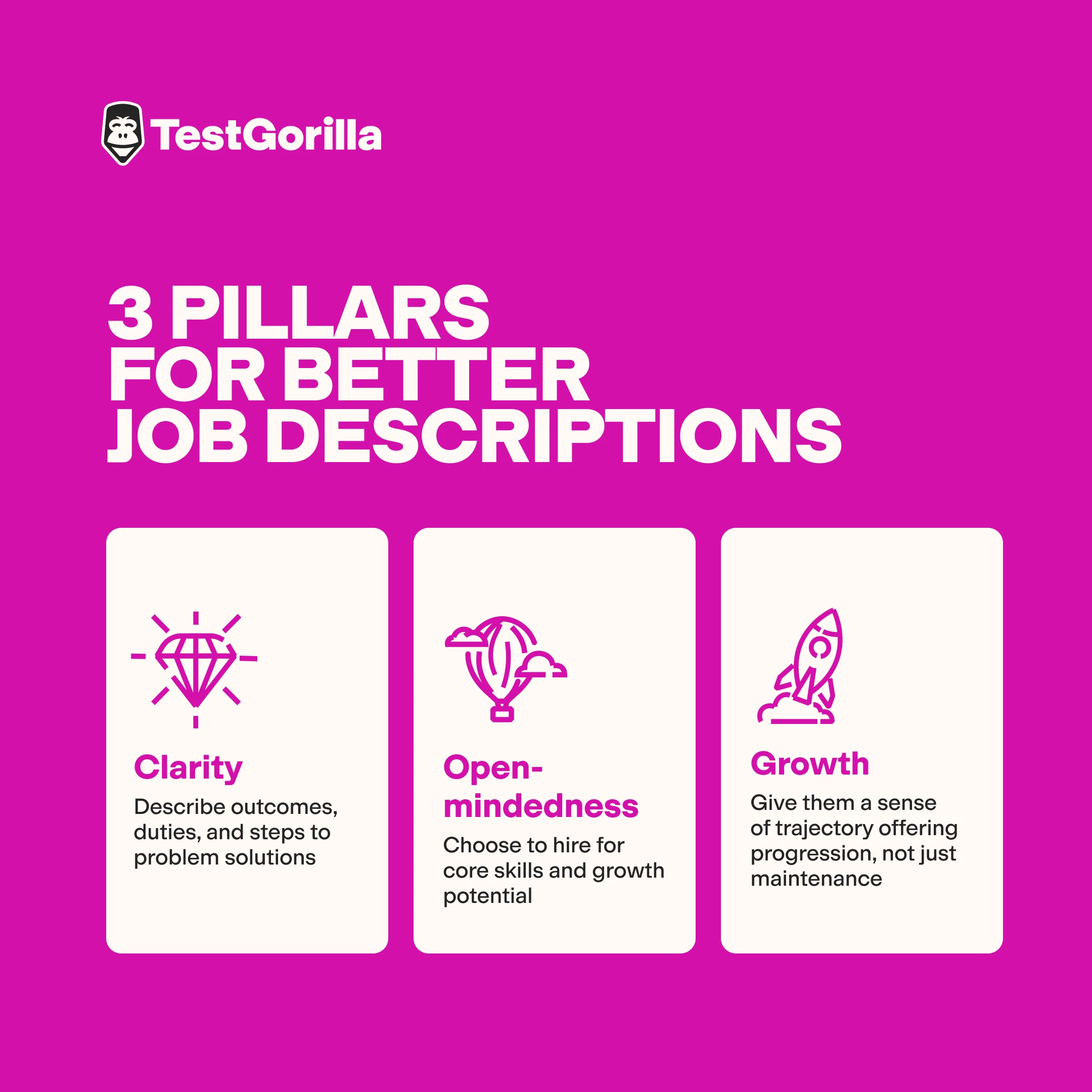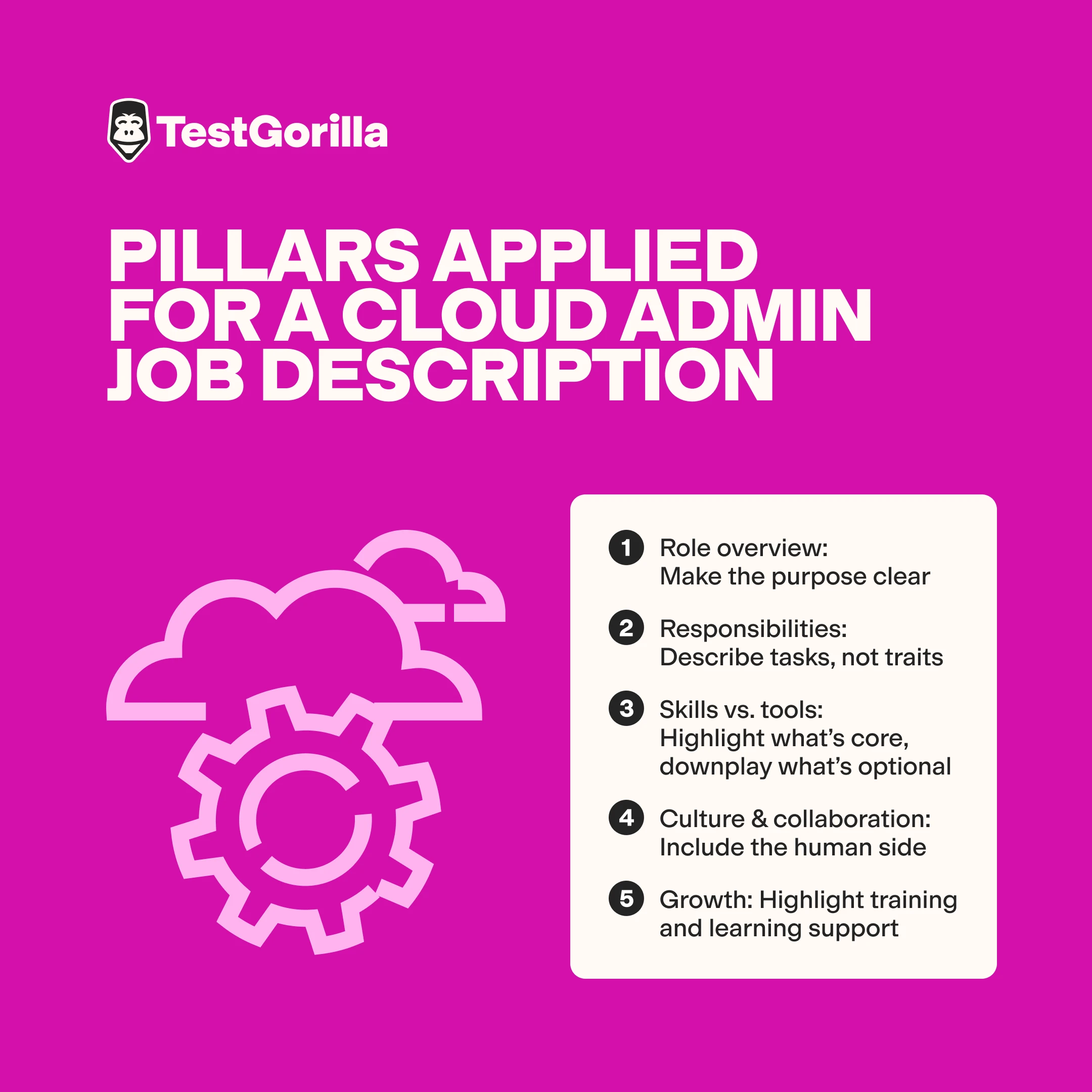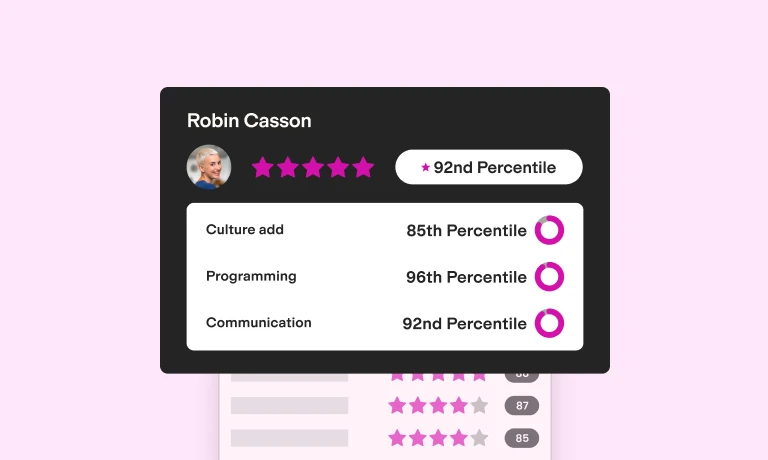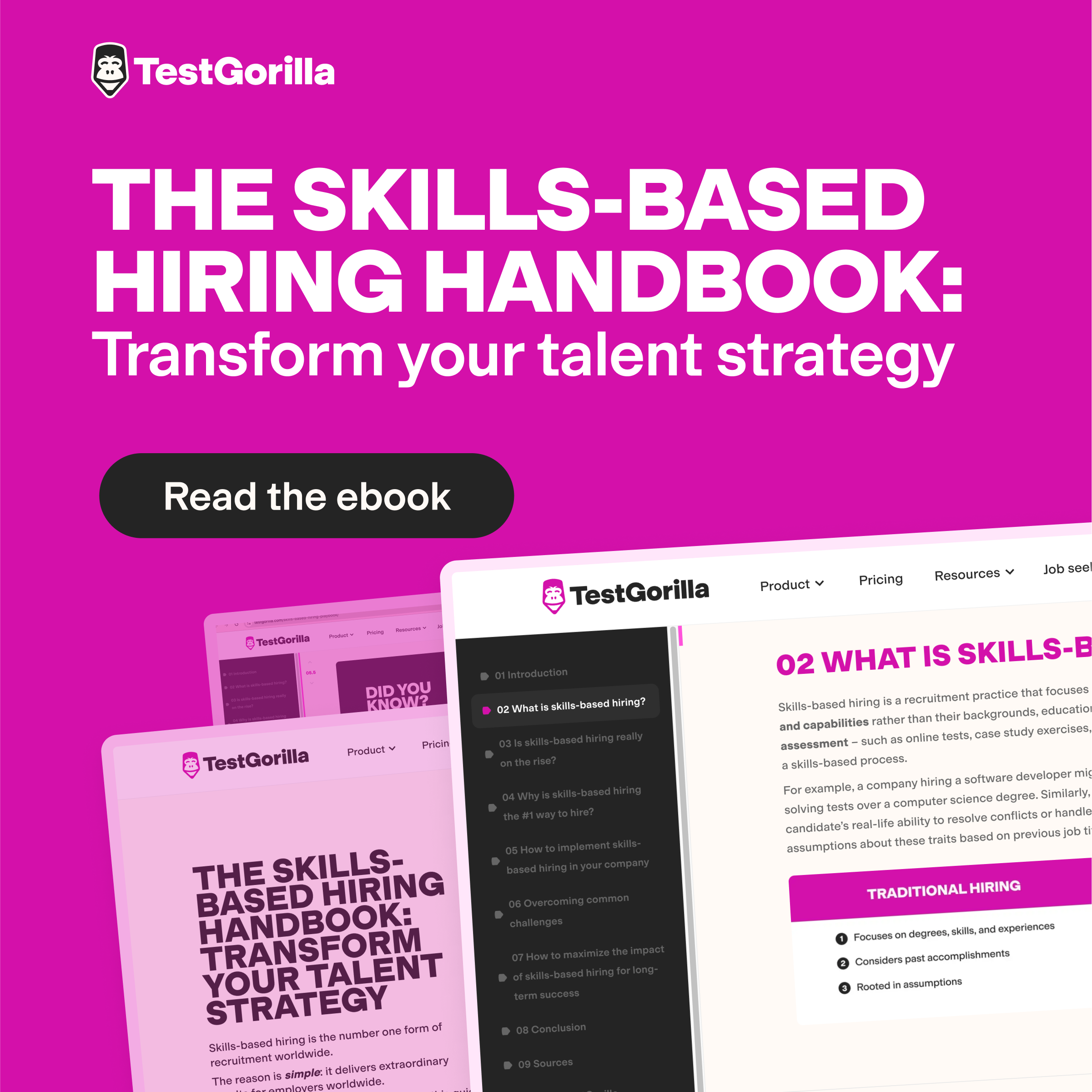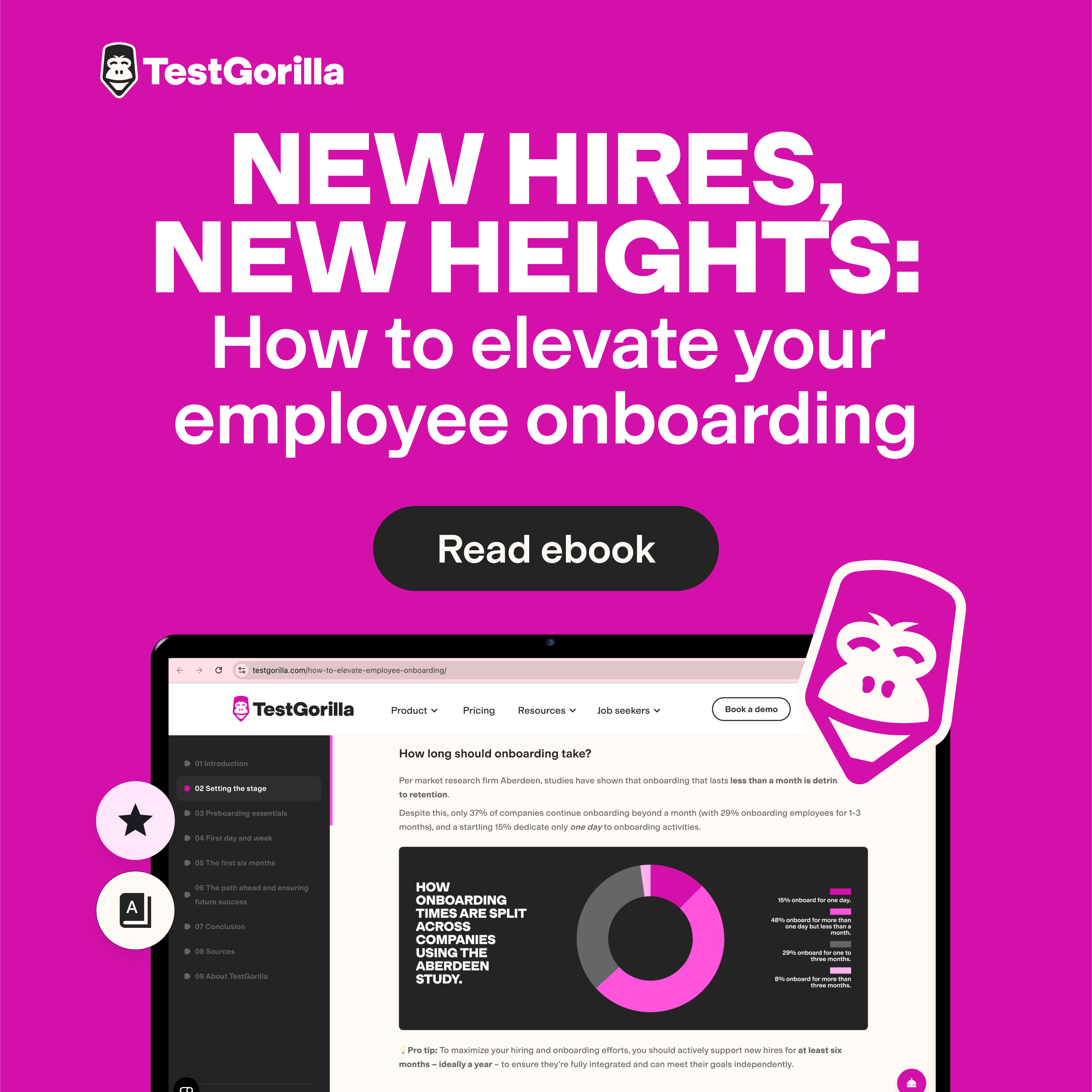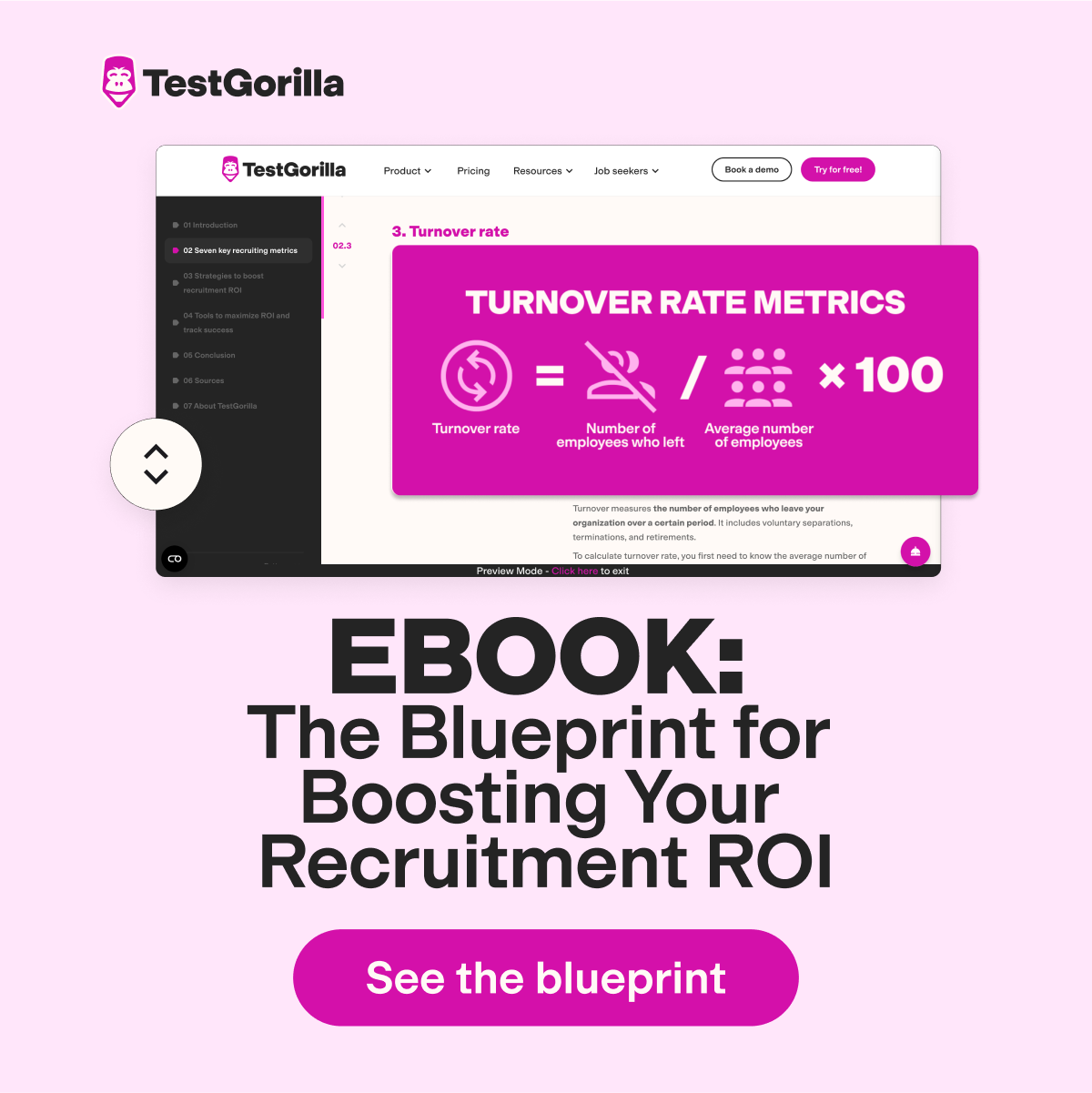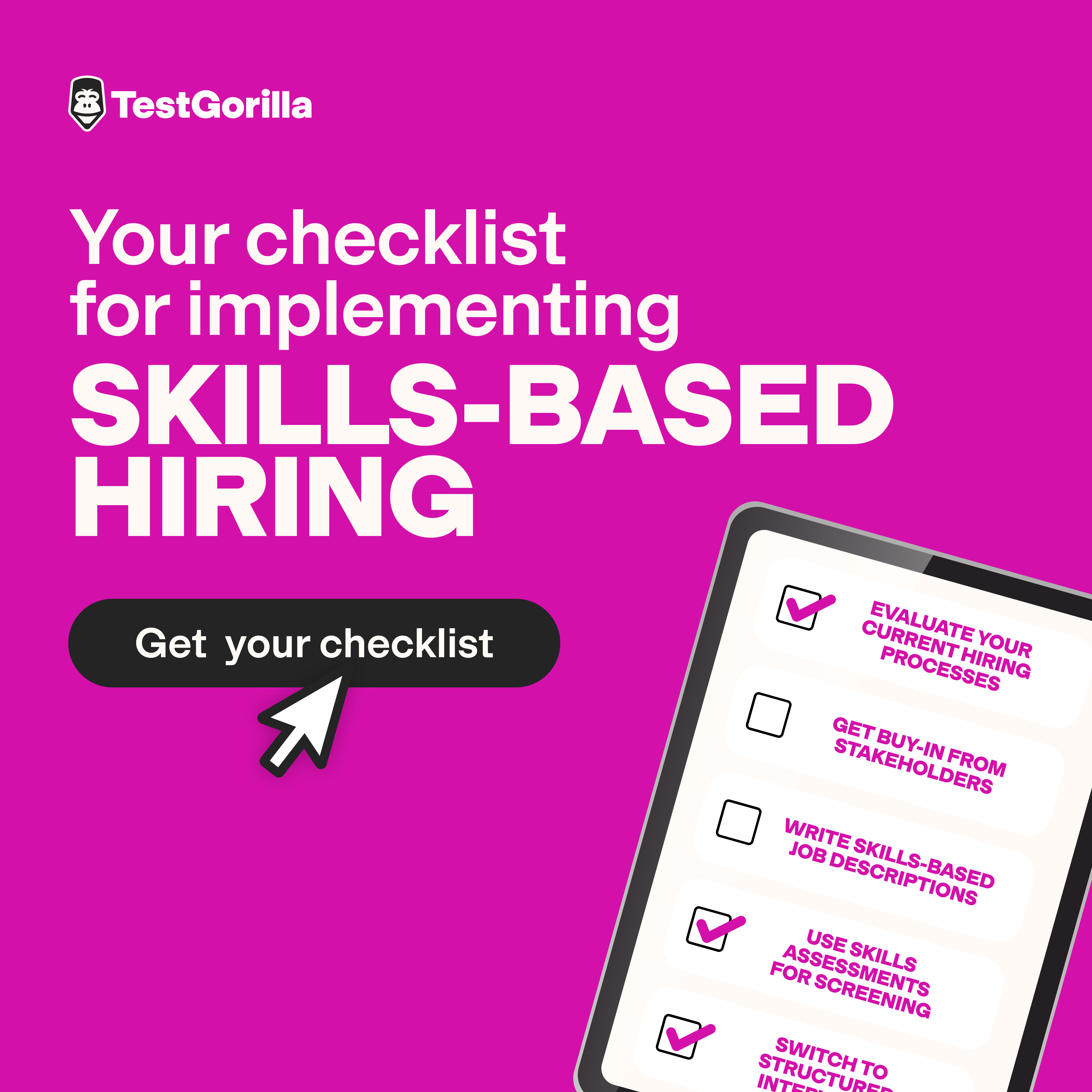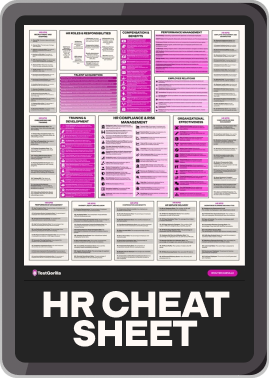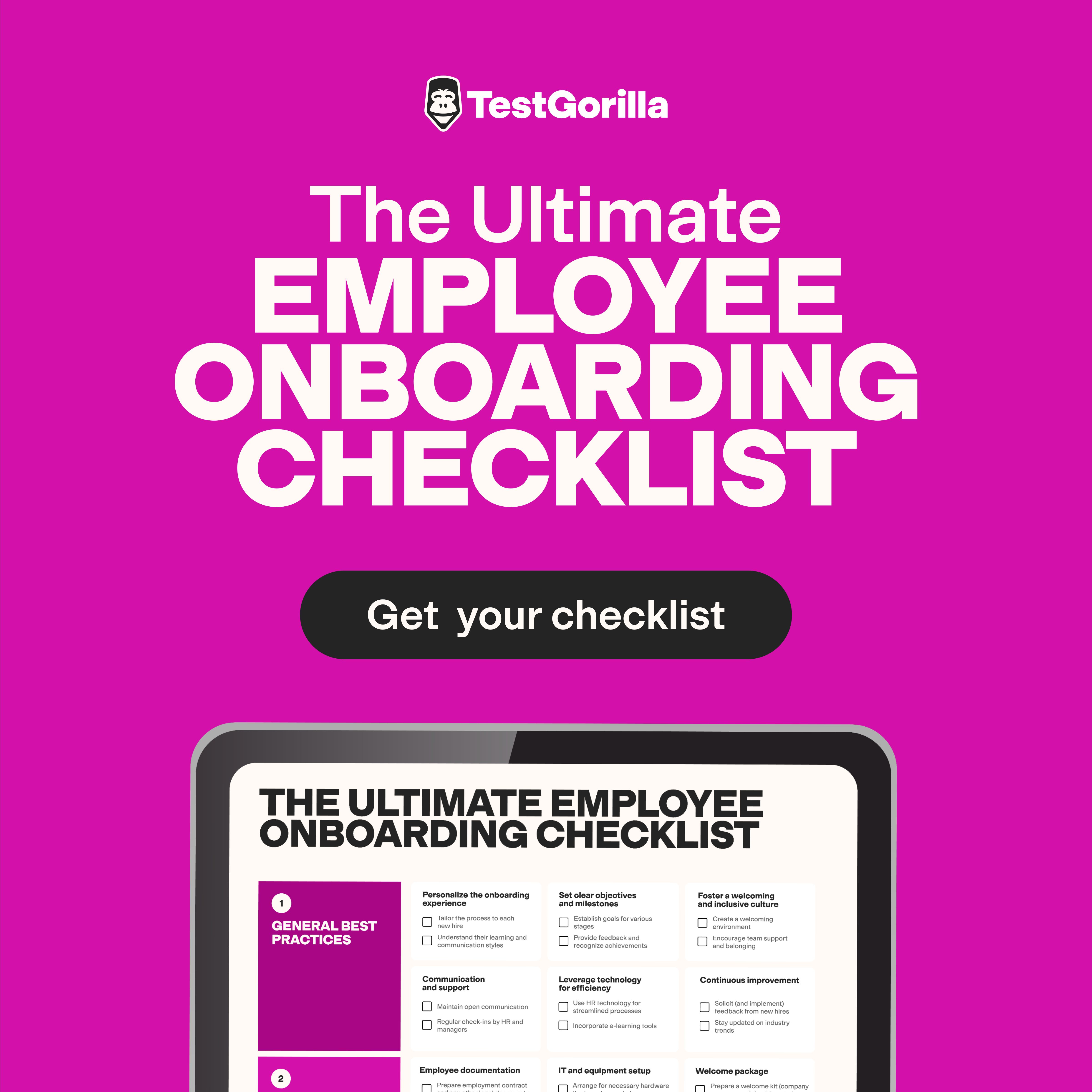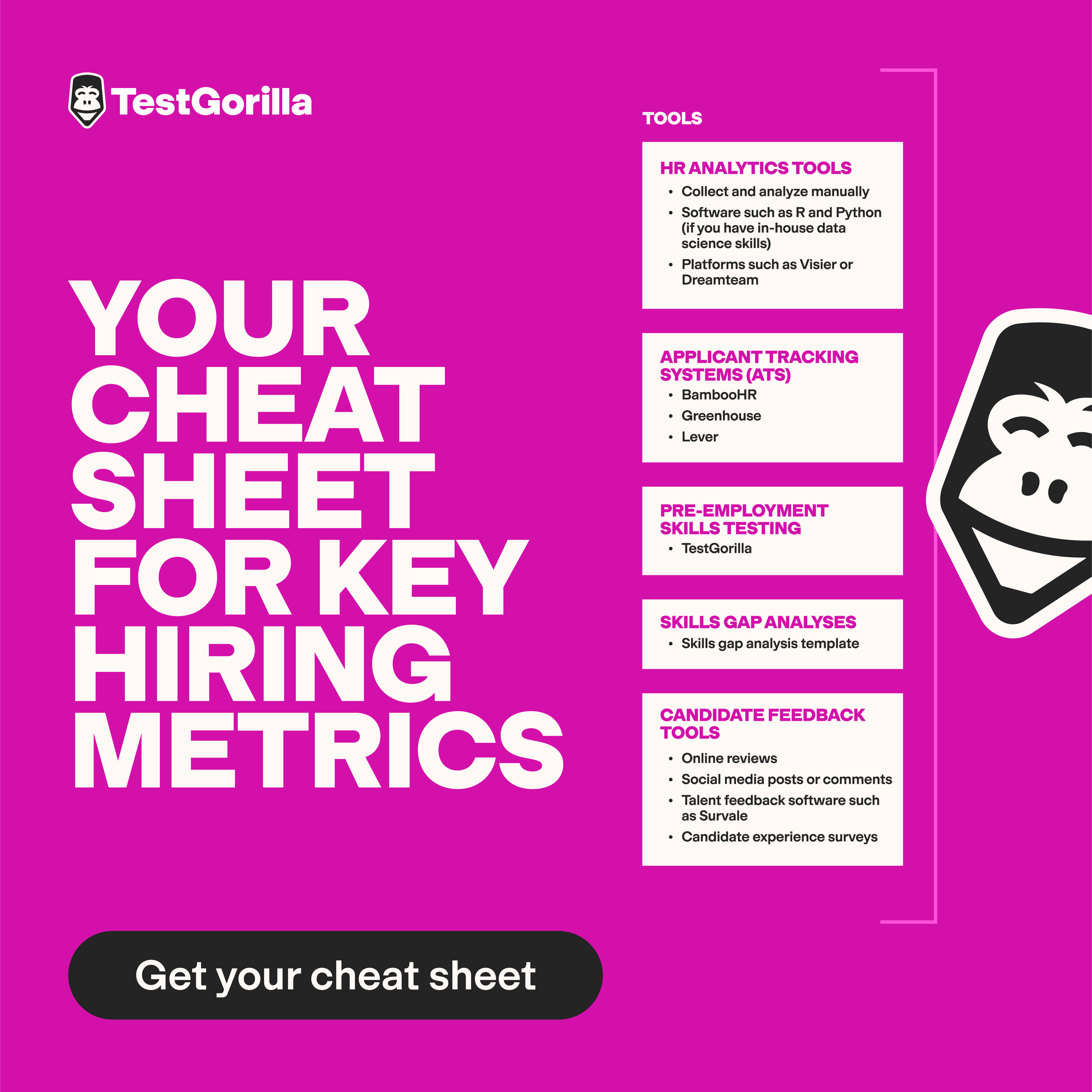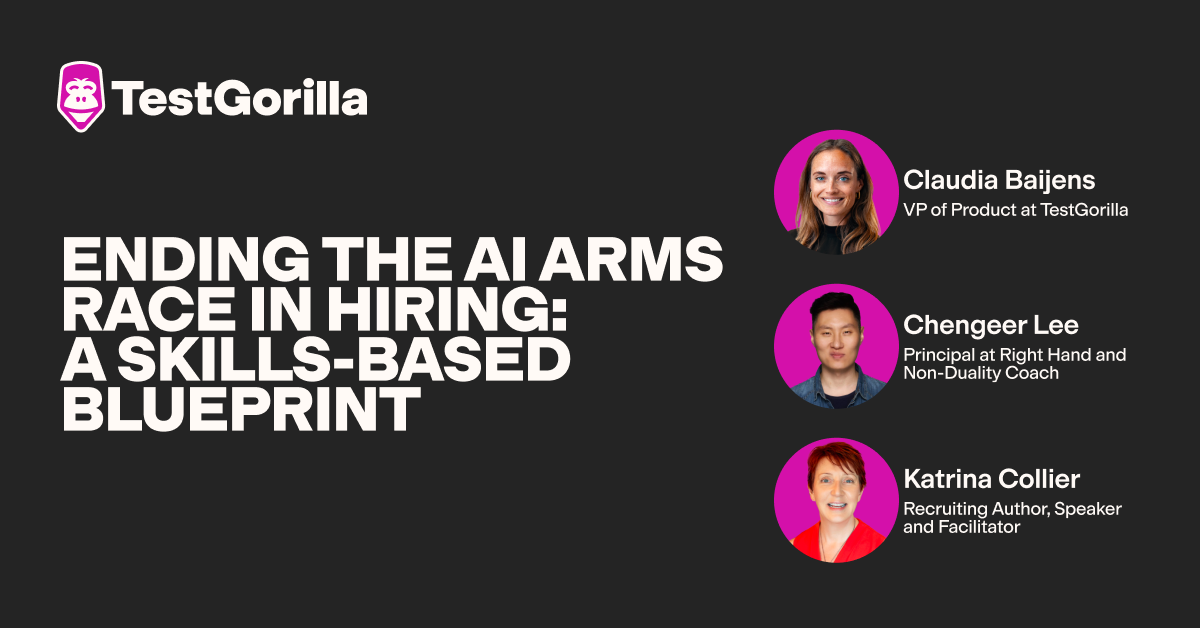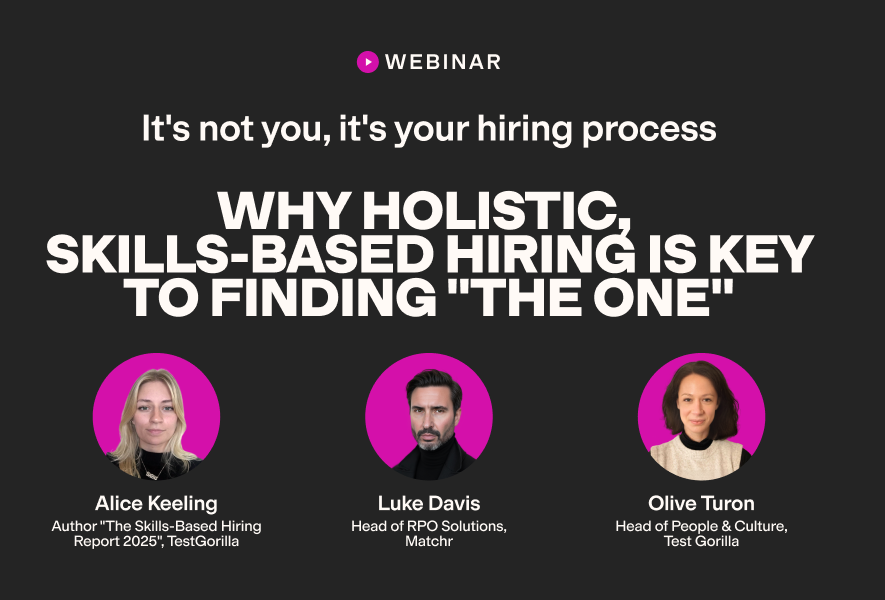How to write a cloud systems administrator job description (3 pillars to hire by + a template)
“They never have time to train, but they always have time to find the perfect unicorn.” That line from the Screaming in the Cloud podcast – a podcast about cloud computing and the people who work in it – sums up the problem with most cloud systems administrator job descriptions.
They’re written as if the perfect candidate will walk in already knowing every platform and tool in the company’s stack. Basically, candidates are expected to “hit the ground running” on day one.
Sure, unicorns exist. But in a market starved for cloud talent, job descriptions that should draw talented people in often push them out.
We think there’s a better approach. Instead of another checklist on “how to write a job description,” we share insights from real cloud admins and job seekers to show you what actually works. Plus, we show you how our Cloud System Administration test can help you find the strongest applicants..
The problem with job descriptions that try to do it all
Many cloud systems administrator postings blur boundaries between roles: They’re part sysadmin, part DevOps, part cloud engineer. In the hunt for unicorns, responsibilities often blend until it’s unclear what the job actually is.
For example, many companies fold traditional sysadmin duties, like network and detailed systems configuration or automation, into a “DevOps” title.
As DevOps engineer Cezary Olborski puts it: “These are slightly different things, and if we need only a strong network and system knowledge, we should stop calling this role DevOps and start to use SysOps or Sysadmin.”
That overlap shows up in cloud admin postings, too. A job might carry the “cloud administrator” title but list mostly DevOps responsibilities like infrastructure-as-code and CI/CD. Or it might focus mostly on firefighting and maintenance while describing itself as a design-and-architecture position.
When job descriptions blur those lines without explanation, they confuse candidates, failing to tell them what they’ll own and where the boundaries are. This can push some candidates away or create misaligned expectations.
→ Tip: If your company intentionally blends sysadmin and DevOps work into one position, be upfront about it. Describe the mix clearly in the posting and give the role a name that reflects that scope (for example, “Cloud Infrastructure Engineer”).
Three pillars experts keep coming back to
The best job descriptions don’t list every possible skill or hedge bets with buzzwords. They ground the cloud systems administrator role in reality. That shows up in three ways: clarity, open-mindedness, and growth.
Pillar #1: Clarity
As Sergio Oliveira, Director of Development at DesignRush, puts it: “Cloud Systems Administrator job descriptions that I’ve seen are the most effective and bold when they describe outcomes, duties, and steps to problem solutions.”
Be precise about scope. Is this role primarily operations-heavy, like monitoring uptime, managing access controls, handling incidents? Or is it automation-heavy, like writing scripts, managing infrastructure as code, optimizing deployment? Or is it a hybrid, balancing both?
The title alone won’t answer that for candidates. The job description must spell it out.
Pillar #2: Open-mindedness
Open-mindedness means choosing to hire for core skills and growth potential instead of demanding a unicorn who ticks every box.
On Screaming in the Cloud, platform engineering manager Don O’Neill fears many companies will chase an “exact match” for every tool and scenario.
It’s a mindset that keeps jobs open for months while solid candidates are passed over, which isn’t ideal in a market already short on cloud talent. IDC estimates that by 2026, 90% of organizations will face IT skills shortages (including various cloud skills) that delay deployments and inflate costs.
Don’s advice: “If you have more open-mindedness about how you hire and what you hire, you're gonna get some great employees who are appreciative that you took a chance on them, which brings loyalty along with it.”
That open-mindedness needs to be visible in the job description. Instead of tool laundry lists or required credentials, emphasize vital skills for cloud administrators: automation, managing multi-cloud environments, cost control, and security. Specific tools come and go, but adaptability is what matters.
Pillar #3: Growth
When candidates read a cloud systems administrator job description, they’re not just asking “What will I do on day one?” They’re also asking, “Where does this take me?” If the posting doesn’t give them a sense of trajectory, they’ll assume it doesn’t have one. On Reddit, one IT professional summed it up perfectly: “I see no path for growth here in my position. I personally hate complacency and I want to begin specializing in a field within IT.”
Another cloud professional said: “While I love the idea of supporting users, I dislike the same routine issues... I yearn for greater work.”
Early-career cloud talent are often drawn to roles that offer progression, not just maintenance.
That’s why growth should be visible in the job description.
Even small signals matter. When a job description mentions exposure to new platforms, ownership of meaningful projects, or dedicated time for learning, it tells candidates your workplace is somewhere their skills can evolve.
The best insights on HR and recruitment, delivered to your inbox.
Biweekly updates. No spam. Unsubscribe any time.
Putting the pillars to work
The next step is turning those pillars into the nuts and bolts of a job description that candidates can use to understand the role and you can use to hire a cloud systems administrator who can succeed in the role.
Role overview: Make the purpose clear
In two or three sentences, explain why the role exists and what problem it solves.
For example: “You’ll maintain and improve our AWS and Azure environments, keeping them secure, reliable, and cost-efficient. This role balances day-to-day operations with longer-term automation projects.”
A candidate should instantly understand how the role fits into the team.
Responsibilities: Describe tasks, not traits
Responsibilities should be written as concrete day-to-day actions, not personality traits.
Instead of vague phrases like “problem-solving skills” or “team player,” describe actual tasks: “Monitor uptime and respond to incidents, manage access controls and identity policies, automate deployments with Terraform or a similar tool.”
Clear, task-based statements let candidates picture the job in practice instead of wondering which traits they’re expected to play up.
John Overton, CEO and founder of Kove IO, recommends going even further by highlighting real-time scenarios:
“Specify ‘provision memory resources within 200-millisecond windows during traffic spikes’ or ‘maintain 99.9% uptime while scaling container density by 100x.’”
He says, “The administrators who've handled these precise challenges will immediately recognize your environment matches their expertise.”
Skills vs. tools: Highlight what’s core, downplay what’s optional
A good cloud systems administrator job description separates what’s fundamental from what’s situational.
Core skills like scripting, automation, cost control, and cloud security transfer across stacks, no matter which platform you use. The specific tools (AWS, Azure, GCP, Ansible, Terraform) should typically appear as examples of how those skills are applied, not as hard barriers that screen people out.
This shows candidates you’re hiring for adaptability and growth, not just a perfect match to today’s stack.
Culture & collaboration: Include the human side
Too many postings treat teamwork and communication as throwaway lines, when they’re central to how cloud admins operate.
This is why Oliveira says that the best job descriptions include “the interaction necessary” to carry out job duties.
Such interactions should be visible in the responsibilities and skills sections – not just buried in a company values statement. For example:
Responsibilities
Partner with development teams to design and support cloud-based deployments.
Communicate incident updates and trade-offs clearly to both technical and non-technical audiences.
Skills
Strong written and verbal communication skills.
Ability to work collaboratively across teams in high-pressure environments.
Spelling these out shows candidates they’ll be part of a team that relies on communication and shared responsibility, attracting people who want to work that way.
Growth: Highlight training and learning support
Don’t just tell candidates they need to “keep up.” Show that you’ll help them do it.
Instead of this: “Must stay current on latest cloud technologies.”
Try this: “We provide an annual budget for professional development, from online courses to conferences, and set aside time each quarter to explore new cloud services.”
You should also make project exposure part of the pitch.
Instead of this: “Other duties as assigned.”
Try this: “This role includes migration and automation projects, giving you hands-on experience with infrastructure-as-code and multi-cloud environments.”
Keep in mind, generic promises of “advancement” don’t mean much. Point to the actual paths people can take, such as, “Cloud administrators in our team often move into senior engineering or architecture roles within 2–3 years.”
A job description built on the 3 pillars
Here’s a draft template that reflects the three pillars (clarity, open-mindedness, growth).
Cloud systems administrator job description template
Job title: Cloud Systems Administrator Location: Remote (US) Department: IT & Infrastructure Reports to: Director of Infrastructure Job type: Full-time
About the role We’re looking for a Cloud Systems Administrator to keep our cloud environments secure, reliable, and cost-effective while helping us evolve toward more automation. This role balances day-to-day operations (uptime, access controls, incident response) with longer-term projects in automation and infrastructure-as-code.
Key responsibilities
Monitor uptime and resolve incidents across AWS and Azure environments.
Manage access controls, identity policies, and security configurations.
Automate deployments and routine tasks using Terraform, Ansible, or similar tools.
Collaborate with developers and security teams to design and support cloud-based deployments.
Communicate incident updates and trade-offs clearly to both technical and non-technical audiences.
Participate in postmortems and continuous improvement initiatives.
Track cloud spend and recommend optimizations for cost efficiency.
Core skills
Scripting and automation (Python, PowerShell, or equivalent).
Infrastructure-as-code tools (Terraform, CloudFormation, Pulumi – experience with one is enough).
Cloud security practices and monitoring.
Cost control and optimization strategies.
Ability to share knowledge and explain technical issues clearly to others.
Tools we use AWS, Azure, GCP Ansible, Terraform, Jenkins Monitoring tools (Datadog, Prometheus, CloudWatch)
(Note: Don’t hesitate to apply even if you aren’t familiar with every tool here – adaptability is more important than total familiarity with our stack.)
Collaboration in practice
Work across development, ops, and security teams on shared deployments.
Contribute to incident calls and provide clear, actionable updates.
Document fixes and share lessons learned to strengthen team knowledge.
Growth and development
Annual professional development budget for training, courses, or conferences.
Quarterly time set aside for exploring new cloud services or tools.
Opportunities to move into senior engineering, architecture, or security roles within 2–3 years.
Exposure to multi-cloud and migration projects to broaden technical experience.
Use assessments and interviews to find the skills behind the description
A well-written job description brings in good applicants, but you still must assess their cloud systems administrator skills.
For cloud systems administrator roles, TestGorilla offers various tests:
The Cloud System Administration test checks real skills in system tasks, cloud services, and networking.
A Problem Solving test or Critical Thinking test can help reveal how candidates adapt, reason through new challenges, and learn.
Adding communication or culture tests can show you how someone works on a team and whether they’ll thrive in your environment long-term.
You can also include additional cloud infrastructure, systems administration, and other tool-specific tests, such as the Windows Server Administration test, to assess candidates’ understanding of tools and determine training needs.
Once you’ve shortlisted candidates with skills assessments, you can use our cloud system administrator interview questions guide to evaluate how they think and communicate in work scenarios.
Ready to hire smarter? Book a free demo or create your TestGorilla account today.
Contributors
John Overton, Kove IO, CEO and founder
Sergio Oliveira, DesignRush, Director of Development
You've scrolled this far
Why not try TestGorilla for free, and see what happens when you put skills first.


